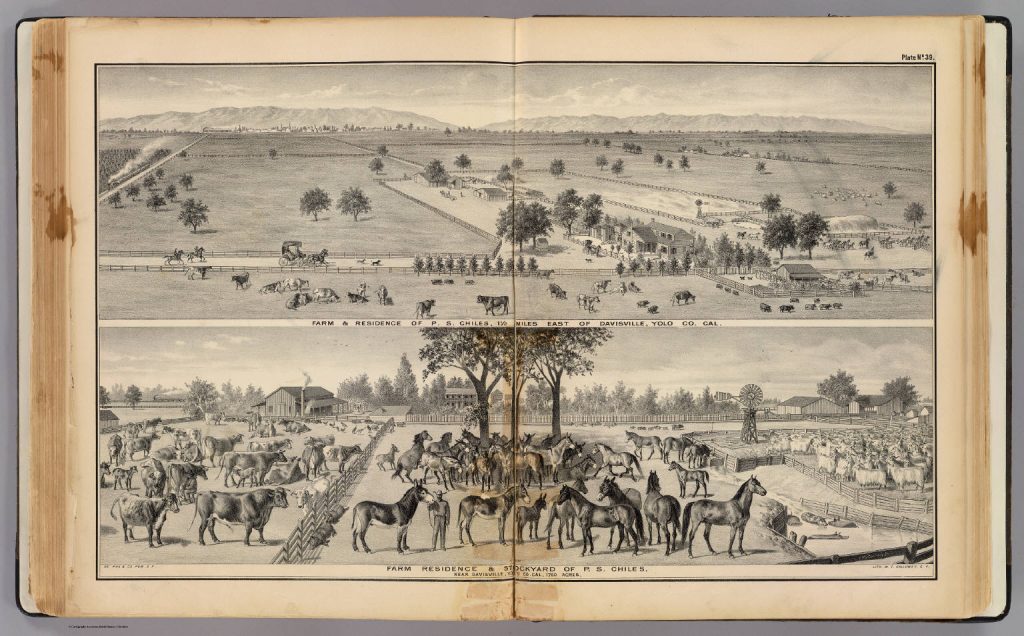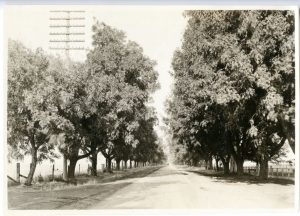
“Chiles Farm, Davisville,” Farm & Residence of P.S. Chiles, De Pue & Company, 1879. Special Collections, University of California, Davis Library.

La Rue Road Near the Pierce Ranch, Early 1900s, Davis, CA. Pierce Family Papers, Special Collections, University of California, Davis Library.
At the turn of the twentieth century, 26 horticulturalists owned orchards totaling 1,000 acres bordering Putah Creek in southern Yolo County. Traditionally grain farmers, the wealthy orchard farmers began to grow almonds in abundance; in fact, Davis had recently become the hub of the state’s almond farming. The wealthy Davis pioneers, namely James F. Chiles, Jacob E. La Rue, and George Pierce, Jr., produced 20% of California’s almond crop in 1902. By 1900, Davisville (later renamed Davis) had become well-known in the state for its specialized, labor-intensive crops. George Pierce, Jr. was a prominent almond grower who pioneered harvesting processes for almonds in the Sacramento Valley. He convinced University of California officials to choose his hometown, Davis, as the site for a new agricultural college in 1906. Although he only owned 132 acres of almond trees, he was one of the largest growers in the state, and he played a lead role in the founding of the California Almond Growers’ Exchange in 1910. According to David Vaught’s Cultivating California, the growth of his almond operation created two interconnected problems: recruiting a steady labor force and maintaining a high quality of work.
In 1907, Monshu Singh, a Punjabi immigrant contractor, solved Pierce’s labor of acquiring a sufficient harvest labor force by providing him with a reliable, steady supply of field workers. The Punjabi farming presence was documented in Pierce’s extensive diaries and account books. The community seems to have lasted only briefly from 1907 to the 1920s until larger, mechanized farming, the Great Depression, and US immigration policy that barred immigration from India led to a decline of the Punjabi farm workers in Davis. It was not until decades later, beginning in small numbers in the 1950s and especially during the 1970s that South Asians of diverse regional, class, and religious backgrounds returned to Davis as students and faculty members at the University of California, Davis.
SOURCES:
Pierce Family Papers, Special Collections, University of California, Davis Library.
Vaught, David. Cultivating California: Growers, Speciality Crops, and Labor, 1875-1920 (Baltimore and London: Johns Hopkins University, 1999).
